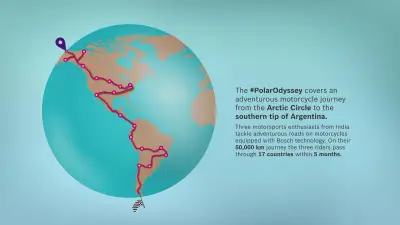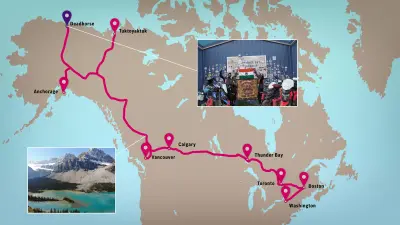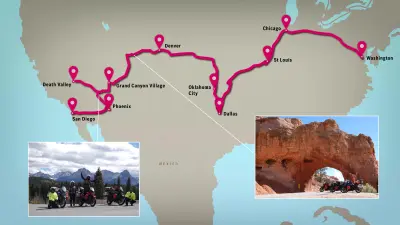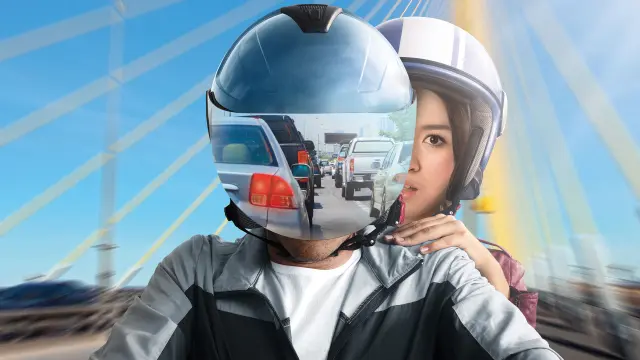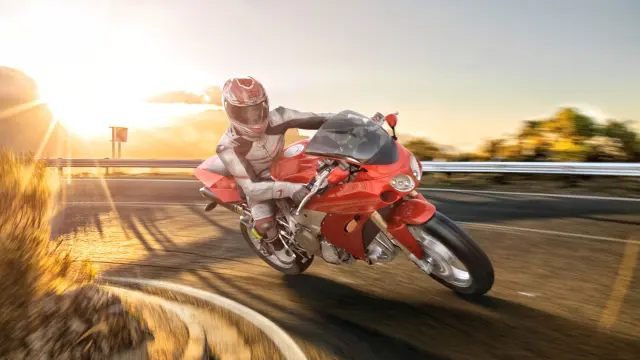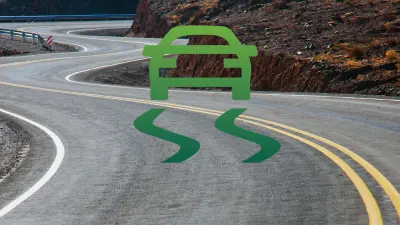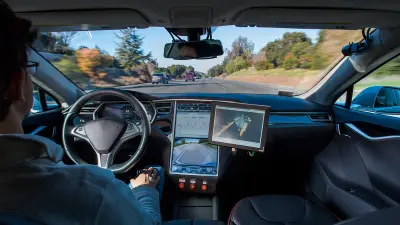Motorcycle adventure: safety assisted
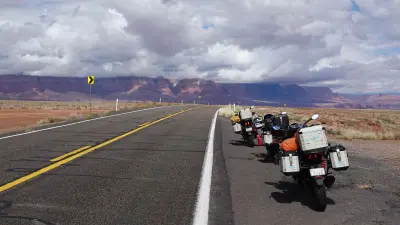
Three men, one mission: To conquer North and South America’s roads on a motorcycle. Before the adventurers set off on their trip from the Arctic to Antarctica, Bosch technology was fitted to their motorcycles.
Off on an adventure
The route is no stroll in the park: 50,000 kilometers in five months — from the Polar Circle in the north to the southern tip of Argentina, close to Antarctica. The trip couldn’t be any more challenging: En route from pole to pole, the journey goes through uninhabited wildernesses, dry deserts and over dangerous mountain passes. Tackling these adventurous roads are the three motorcycle enthusiasts from India: Deepak Kamath, who hit the headlines in 1994 when completing a 119-day motorbike tour around the world, Deepak Gupta, a member of the G.O.D.S. (Group of Delhi Superbikers) and the Bosch engineer, Avinash P.S.
17 countries
will be passed through by the three riders on their five-month 50,000-kilometer journey.
The trio started out southwards from Deadhorse, a town in Alaska that is only a few kilometers away from the Polar Sea, in August 2018. During the course of their journey, the riders will pass through 17 countries and drive down the American continent’s most hazardous roads: Through remote regions on the Dalton Highway in Alaska and the Dempster Highway in Canada, on the Pan-American Highway through the Peruvian part of the Atacama Desert, and through the Bolivian Andes on the Yungas Road, considered to be the world’s most dangerous road due to its sheer roadside drops. The route will take the three over asphalt, sand, mud and gravel to Ushuaia, Argentina’s most southerly town in the province of Tierra del Fuego (Land of Fire).
Reliable equipment is vital for the riders if they are to survive the five-month test of endurance: Their motorcycles are therefore fitted with an electronic engine management system as well as the motorcycle ABS (antilock braking system) from Bosch. It means that, regardless of the situation on the road, riders can rely on a technology that is safe, economical, and sustainable. They may be on the adventure trail, but they are certainly not reckless!
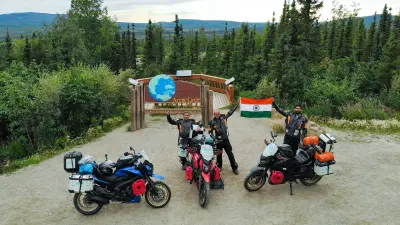
Fewer risks, more riding pleasure
Motorcyclists love the direct riding experience — the wind, the genuine contact with their surroundings and the feeling of being close to the road. However, it also holds its dangers: The risk of dying in a traffic accident is up to 20 times higher for motorcyclists than car drivers. Bosch’s innovative solutions make motorcycling safer without curtailing riding pleasure.
